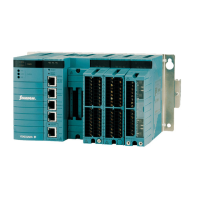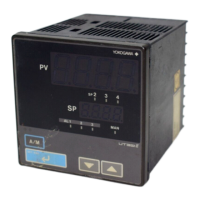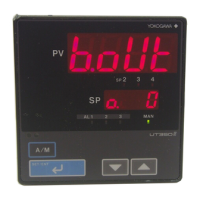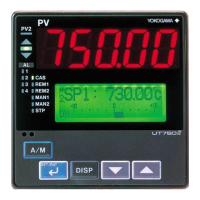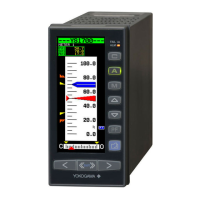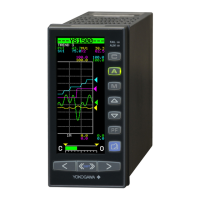<4. Control Application Creation>
4.2 Application Programming Languages
Logic Designer supports 5 types of programming languages for creating
control applications. This section describes the characteristics of each of
these languages, and the types of applications for which they are best suited.
4.2.1 Programming Languages Supported by Logic Designer
Logic Designer supports 5 types of programming languages conforming to the
IEC 61131-3 standard for creating applications.
• FBD (Function Block Diagram)
In FBD, functions, application blocks and NPAS_POUs are provided as blocks
and connected using signal lines, along which data is propagated.
FBD offers a visual representation of data flow, and is thus ideal for
programming regulatory control of analog signals.
• LD (Ladder Diagram)
LD is the most widely used language for programming PLC applications, where
logical computations are coded using symbols of contacts and coils as basic
components.
Besides offering a visual representation of data flow like FBD, LD allows not only
analog signals but also digital signals to be represented visually using BOOL-
type contacts and coils.
• SFC (Sequential Function Chart)
An SFC consists of steps, transitions and actions. While a step is active, actions
coded within the step are executed. When the transition of the step becomes
true, the following step then becomes the active step, and its actions are
executed until its transition becomes true, and so on.
SFC’s step-by-step processing makes it ideal for building process progress type
applications and sequence control applications.
• IL (Instruction List)
In IL, each line consists of one operator and its operands, so coded expressions
are unambiguous but it is cumbersome for coding complex logical relations.
• ST (Structured Text)
In ST, control applications are coded using text. ST allows conditionals, such as
IF, CASE and FOR statements, as well as complex calculations to be coded
easily. As such, it is well suited for conditional decision and calculation
processing.

